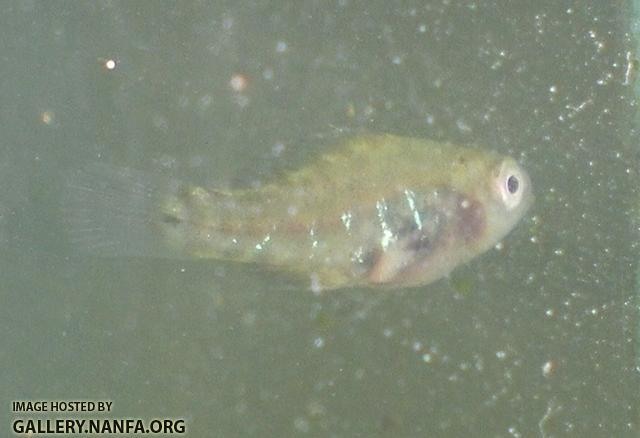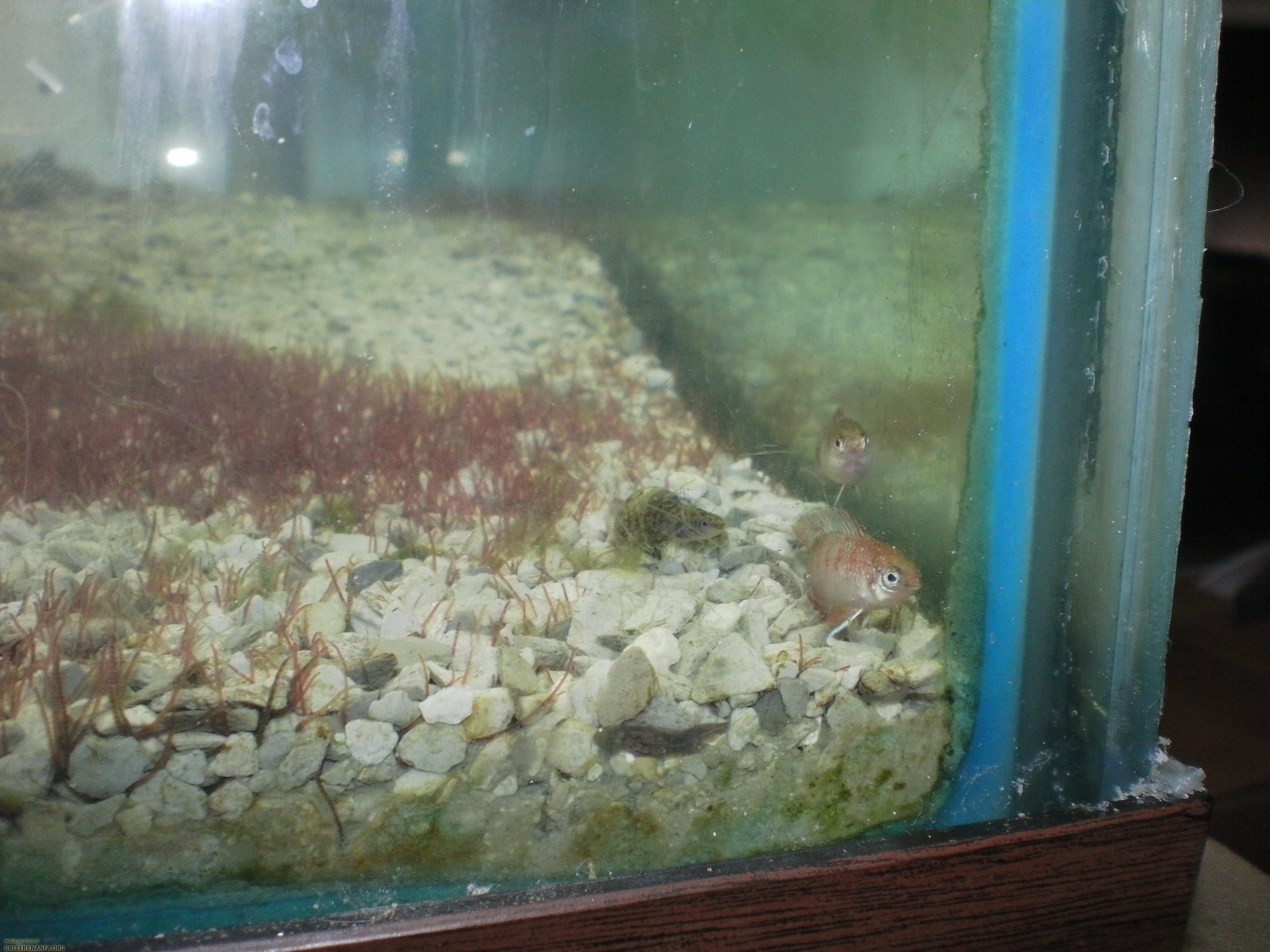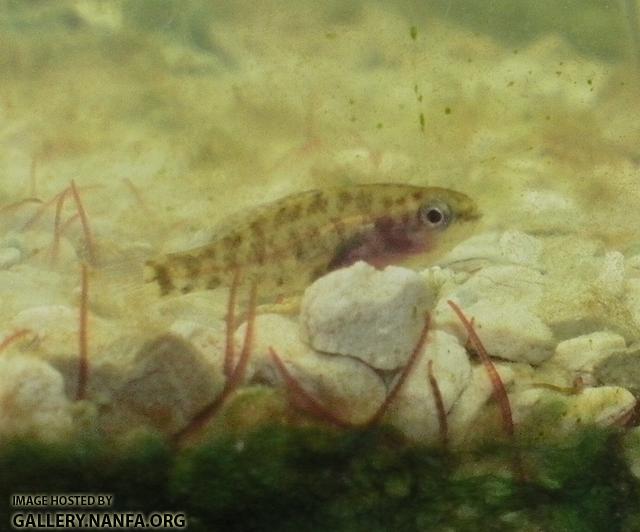Here is a link to the previous topic: http://forum.nanfa.o...ssoma-gilberti/
Here is a link to the Fish In Focus article that summarizes that 50+ page, 1000+ post behemoth: http://www.nanfa.org...Egilberti.shtml The main point is: Keep your pygmy sunfish breeding or soon you won't have any. They've got such short life spans.
I'm going to try to keep these fish again. Now that I know how critical getting fry from them is, I've designed the setup to maximize fry survival. At first I was going to do a divided tank, with 7 mesh plastic canvas segmenting a 75 gallon tank into four regions. I would rotate the fish once a month into a new region. They would leave behind eggs and fry which, by the time the adults were rotated back to that section, would be too large to eat. But after doing some math I realized that this would only save the last 3 or so days of fry (that's how long the eggs take to hatch), which means every month I would be imperiling 26 or 27 out of 30 days' worth of fry. That's not a very good egg recovery rate. So instead I scratched the dividers and am following Gerald's suggestion. Every weekend I will use a gravel siphon to collect the eggs from where they are laying on the substrate. I have a 10 gallon tank set up, and will pour the egg water into that 10 gallon to allow the fry to hatch and grow separate from the adults. That's the plan
The foods I'm going to feed them are:
- Petsmart cubed frozen bloodworms, which I will hold with planting tweezers in the tank water and then cut off of the cube with scissors, so as to decrease the size
- Live grindal worms, which I grow on sponges in plastic boxes using dog kibbles and add to the tank once or twice daily. Hand feeding tames the fish, otherwise they flee when they see you.
- Live microworms, which I grow on oatmeal in tupperware containers using a coffee filter
- Ken's Golden Pearls, various sizes.
- Live blackworms (in-tank population). The one pound for $36 from Eastern Aquatics arrived yesterday, I'll upload some pictures later.
- Live powdered green water in the fry tank














